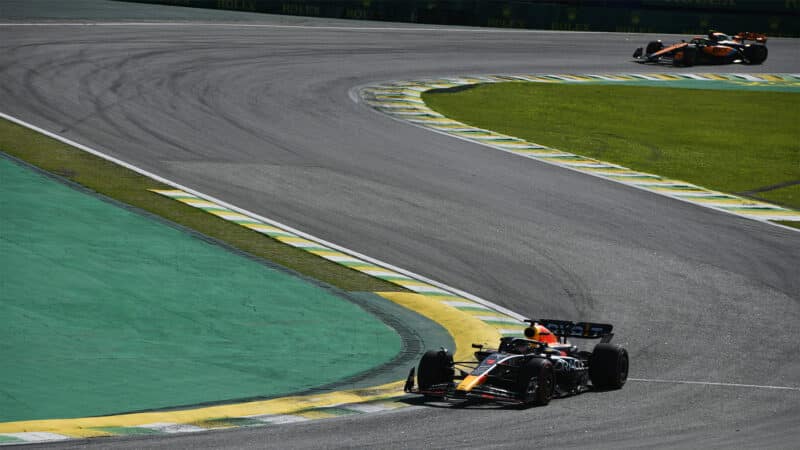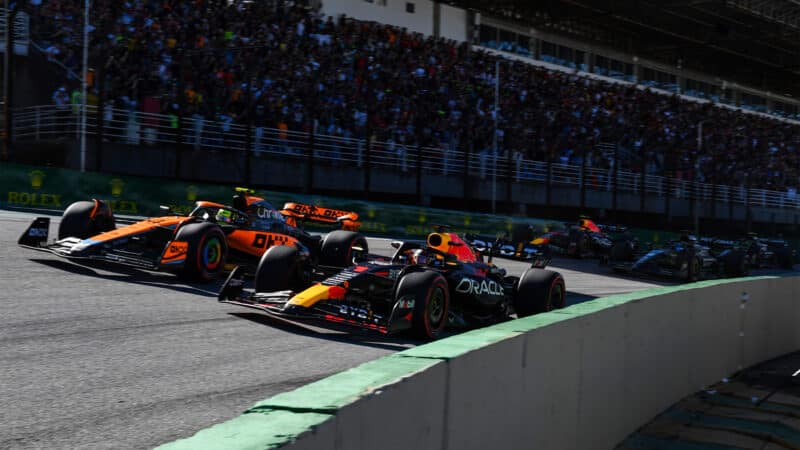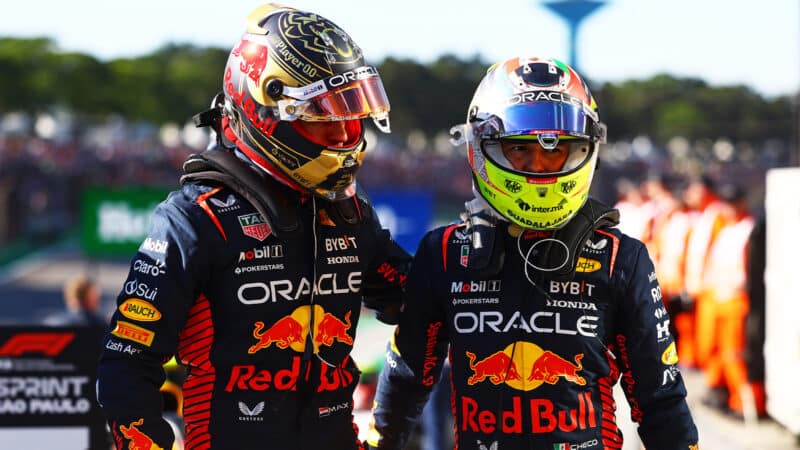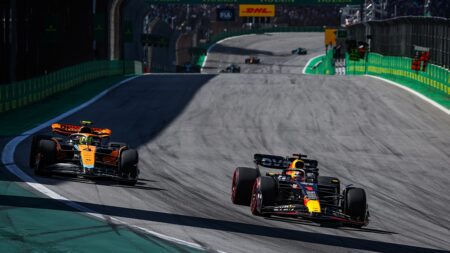And then the matter of last year’s race at Interlagos was brought up, when Max Verstappen ignored team orders to help Perez in his quest to finish second on that occasion too. There appeared to be bad blood at the time, with the Mexican’s crash in Monaco regularly mentioned but Verstappen not explaining why he declined to support his team-mate.
If there’s one thing Verstappen is, it’s consistent.
Asked if that situation had been resolved and he’d be willing to help out this time around, Verstappen made it clear nothing had changed.
“At the end of the day, I think that it shouldn’t always matter on me to get the points,” Verstappen said. “But I’m confident that Checo can stay ahead, because I do think that, on average, you know, we have the faster car.”
If Perez was hoping for a bit of help, he’s not going to get it, and it just reiterates how securely Verstappen views his position within Red Bull. But his attitude does provide certainty that you always know what you’re going to get from him — he didn’t play ball last year and he won’t play ball moving forward.
You can’t legislate for weather
Friday afternoon’s qualifying session saw some of the most dramatic scenes I can remember, with a storm front developing rapidly. I’d been watching the weather radar for much of the day with a threat of rain around for qualifying, and pockets of heavy showers kept just appearing nearby but managing to just skirt the track each time.
Then came the developing of a line of rain that was going to sweep across Interlagos, but at that point it didn’t look like it was a particularly threatening front. While it would have definitely impacted running, it was nothing to be concerned about.
How quickly that evolved into a severe storm was pretty remarkable, and it soon became a visible threat rolling towards the circuit.
Here’s the video of the grandstand roof collapsing at the circuit 😱
Gusts of 104 km/h were recorded at the airport, as per @sdietzf1.
We hope everyone is safe 🙏 #F1 #BrazilGPpic.twitter.com/5BuNTjNX0y
— Fastest Pitstop (@FastestPitStop) November 3, 2023
As the wind picked up massively and torrential rain started falling, fans were left running for shelter and temporary structures started to feel the impact. A roof was ripped off one of the Turn 4 grandstands while another hospitality unit saw part of its roof collapse.
There was understandable concern seeing those images, but criticism of F1 or the race organisers themselves was grossly unfair. In a weekend where a storm caused damage to far more established buildings across the UK, it’s clear that sometimes you can only deal with the aftermath when nature delivers some unexpected challenges.
The storm wasn’t forecast, and the vast majority of grandstands and units survived the winds and rain, so sometimes you have to be thankful that there weren’t serious injuries from a dangerous situation that was not the direct making of anyone involved in the race.
Learn from the layout

Brazil’s undulating terrain kept racing close…unless you were chasing Verstappen
Red Bull
Perhaps Interlagos was also targeted a little bit because of its age, but the iconic track can teach other venues a thing or two when it comes to the basics of racing.
Interlagos is a track that utilises the topography brilliantly, creating challenges in terms of corners that are both on and off camber, acceleration zones that are both steeply uphill and downhill, and racing lines that don’t have to be exactly the same each and every lap.





